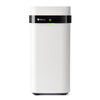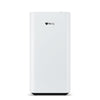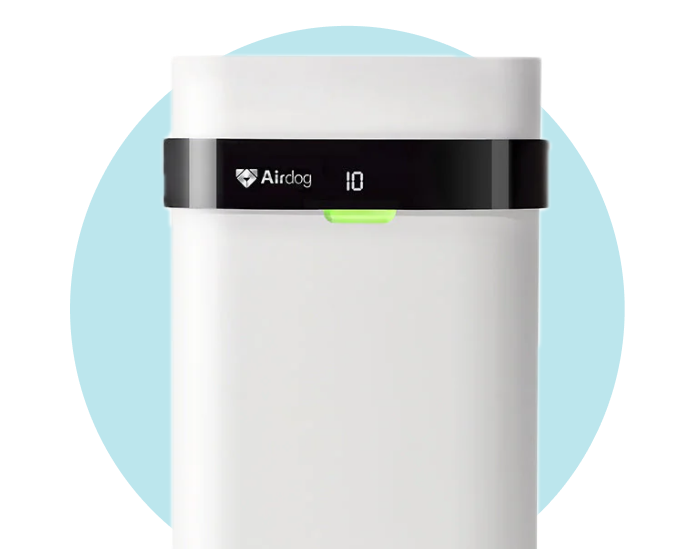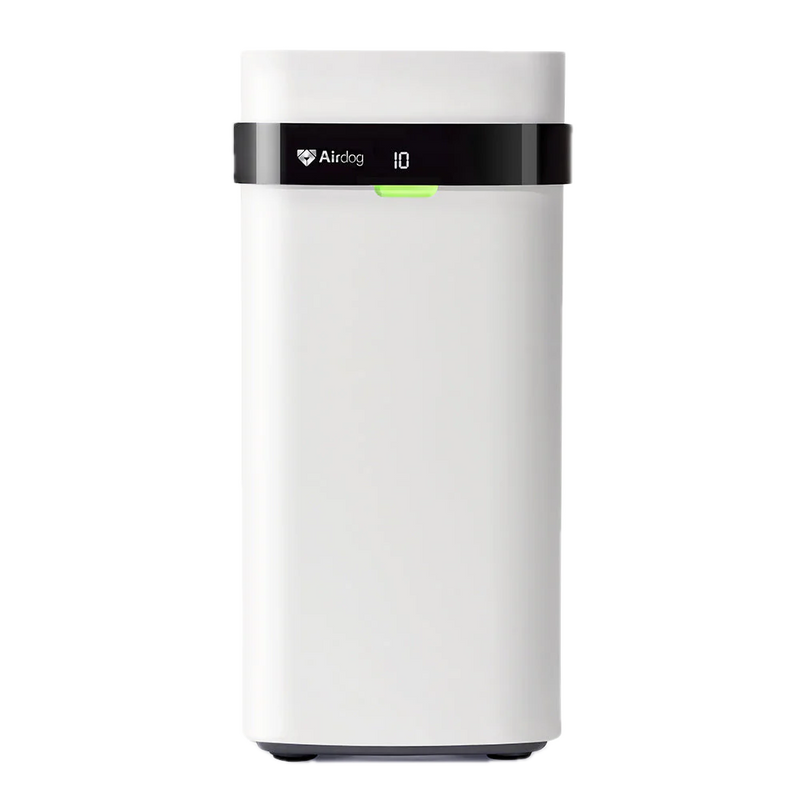Have you ever wondered if leaving your air purifier on all day is the secret to maintaining truly clean indoor air? In today’s world, where allergens, pollutants, and harmful particles pose real risks to health and well-being, air purifiers have become an essential part of many households. The question “do you leave air purifiers on all day” is no longer trivial—it’s central to making the most of these devices.
This article explores the benefits, key considerations, and best practices for continuous air purifier use. Whether you’re a tech-savvy homeowner integrating smart solutions or a parent focused on protecting your family, understanding how to maximize your air purifier’s performance is a vital step toward better living.
The Science Behind Air Purifiers
When it comes to achieving cleaner indoor air, it all starts with understanding how purification technology works. By looking at how air purifiers tackle common pollutants, we can see why running them all day may offer real advantages.
Breaking Down Air Purifier Technology
Air purifiers operate on the principle of air filtration, drawing air from the environment, trapping pollutants in filters, and circulating clean air back into the room. The effectiveness of this process depends significantly on the types of filters used and the purifier's ability to handle the volume of air in a given space.
-
HEPA Filters: High-Efficiency Particulate Air (HEPA) filters are widely recognized as teh traditional benchmark in air purification. They can trap 99.97% of particles that are as small as 0.3 microns in diameter. These include pollen, dust, mold spores, and some bacteria.
-
Activated Carbon Filters: While HEPA filters specialize in capturing particulates, activated carbon filters target gases and odors. They’re particularly effective at adsorbing volatile organic compounds (VOCs) released from sources like paints, cleaning supplies, and cooking.
-
Beyond Traditional Filters – Airdog’s TPA® Technology: Unlike HEPA or carbon filters that merely trap pollutants, Airdog uses patented TPA technology to actively destroy particles down to 0.0146 microns — far smaller than what a HEPA filter can handle. This means cleaner air, fewer filter replacements, and continuous protection, making it an ideal option to run all day.
The synergy between HEPA and activated carbon filters allows air purifiers to target both particulates and gases, offering more complete air cleaning. Yet advanced air purifiers such as Airdog, take this a step further by combining both functions into a single system.
Continuous Operation and Air Quality
Running an air purifier continuously can deliver meaningful health benefits by helping maintain consistently clean air. Cleaner indoor air has been linked to improved respiratory comfort and overall wellness, especially in environments where pollutants and allergens are constantly present.
Air quality isn’t something that can be “fixed” once. Everyday activities like cooking, cleaning, or even just opening windows can quickly reintroduce contaminants into the home. Continuous operation ensures that your purifier keeps pace with this constant cycle, providing a steady defense against airborne particles and keeping indoor spaces healthier over time.
The Importance of Air Change Per Hour (ACH)
Air Change Per Hour (ACH) is a critical factor in determining the efficiency of an air purifier. ACH refers to the number of times an air purifier can filter the total volume of air in a room within an hour.
-
Optimal Purification: For an air purifier to be effective, it needs to operate at an ACH rate suitable for the size of the space it is in. The higher the ACH, the more efficient the purifier is at cycling air and removing pollutants.
-
Necessity for Constant Operation: Understanding ACH also highlights why it's essential to keep air purifiers running continuously. To maintain a high ACH and, consequently, cleaner air, the air purifier needs to work around the clock, especially in spaces where pollutants are constantly introduced.
By understanding how air purifiers work—and why continuous operation matters—you can make smarter choices about keeping your indoor air clean. If health and wellness are your priority, running your air purifier throughout the day can help reduce exposure to harmful pollutants and support long-term well-being. The principles of ACH makes this clear: only with consistent operation can your purifier cycle and refresh the air effectively, turning your home into a healthier, safer environment.
Health Benefits of Continuous Air Purifier Use
The continuous use of air purifiers offers significant health benefits, especially in homes where allergens and pollutants are always present. If you’re aiming to improve the air quality in your living space, recognizing these advantages is an important step toward creating a healthier environment.
Reduction of Allergens
Allergens such as pollen, dust, and pet dander are pervasive in most homes, contributing to allergic reactions and respiratory issues. Continuous air purifier use plays a vital role in mitigating these allergens by:
-
Constant Filtration: Ensuring these particles are consistently removed from the air, reducing the likelihood of allergy flare-ups.
-
Improved Respiratory Health: If you or something in your household struggles with asthma or seasonal allergies, running an air purifier can bring real relief by reducing the triggers that cause flare-ups.
Mitigation of Harmful Airborne Particles
Smoke, VOCs, and other harmful airborne particles can take a serious toll on your health over time. Keeping your air purifier running continuously helps to:
-
Reduce Exposure: Limiting the concentration of smoke and VOCs in the air, which are known to contribute to respiratory problems and other health issues.
-
Protect Vulnerable Individuals: Especially beneficial for children, the elderly, and those with pre-existing health conditions, by providing a cleaner breathing environment.
Long-term Cardiovascular Benefits
Recent studies underscore the long-term cardiovascular benefits of continuous air purifier use. These benefits include:
-
Lower Diastolic Blood Pressure: The study suggests a link between long-term indoor air purification and improvements in diastolic blood pressure, a key indicator of cardiovascular health.
-
Reduced Risk of Heart-Related Issues: By mitigating airborne pollutants that can contribute to cardiovascular disease, air purifiers play a preventive role in heart health.
Prevention of Mold and Bacteria Growth
Mold and bacteria not only pose health risks but can also lead to unpleasant odors and damage to home furnishings. Continuous air purification aids in:
-
Inhibiting Growth: By reducing humidity levels and removing spores from the air, air purifiers help prevent mold and bacteria from taking hold.
-
Promoting a Healthier Environment: Clean air is less conducive to the growth of these microorganisms, supporting overall well-being.
Through the continuous use of air purifiers, you can experience a wide range of health benefits, from allergy relief and reduced exposure to harmful particles, to long-term cardiovascular support and even the prevention of mold and bacteria growth. These advantages highlight that maintaining clean indoor air isn’t just comfort; it’s a vital part of protecting your health and overall well-being.
Cost and Energy Considerations
When debating whether to leave an air purifier on all day, the conversation inevitably turns to cost and energy considerations. For households striving to balance a healthy living environment with economic efficiency, these factors play a critical role. In this section, we’ll break down the energy demands of continuous use and share practical strategies to manage costs without compromising air quality.
Energy Consumption of Continuous Use
Running an air purifier non-stop prompts concerns about energy use and its impact on electricity bills. However, several factors can mitigate these concerns:
-
Energy-Efficient Models: Modern air purifiers are increasingly designed with energy efficiency in mind, ensuring they can run continuously without creating a noticeable spike in utility bills. Airdog stands out in this regard — its patented TPA® technology operates with exceptional energy efficiency.
-
Variable Speed Settings: Utilizing air purifiers with adjustable speed settings allows for energy conservation. Lower settings can be used during times when less purification is needed, reducing overall energy use.
-
ENERGY STAR Ratings: Selecting air purifiers with ENERGY STAR certifications ensures the device meets strict energy efficiency guidelines set by the U.S. Environmental Protection Agency. These models use up to 40% less energy than standard models.
Economic Aspects of Continuous Operation
The economic implications of running an air purifier continuously include not just energy costs but also the expense of filter replacements. Managing these costs effectively comes down to choosing the right technology.
-
Cost-Benefit Analysis: Weigh the long-term health benefits of continuous air purification against the immediate costs of energy use and filter replacements. Improved health outcomes can lead to reduced medical expenses, offsetting the operational costs.
-
Filter Replacement Savings: Traditional HEPA filters require frequent replacements, which add up quickly both financially and environmentally. Airdog eliminates this issue with its reusable, washable filters, removing the current cost of replacements while drastically reducing waste. Combined with Airdog’s energy-efficient design, you’re able to maintain 24/7 clean air without worrying about ballooning expenses.
In essence, the decision to leave an air purifier on all day comes down to balancing health benefits with energy use and economic considerations. By choosing energy-efficient models and taking advantage of adjustable settings, you can minimize power consumption while maintaining clean air. With Airdog’s washable, reusable filters, the added burden of costly replacements is removed, making continuous air purification both practical and affordable.
Operational Best Practices
Ensuring your air purifier operates continuously without hitch requires adherence to several best practices. These practices not only guarantee maximum efficiency and performance but also contribute to the longevity of the device. Let’s dive into the operational strategies that can help optimize air purifier use for continuous operation.
Proper Placement for Maximum Efficiency
-
Avoid Corners and Obstructions: Place the air purifier in a location where air can freely circulate in and out of the unit. Avoid corners or tight spaces where airflow might be restricted.
-
Consider Room Traffic: High-traffic areas might benefit more from air purification due to increased air movement and potential introduction of pollutants. Strategically position the air purifier to maximize its exposure to these pollutants.
-
Height Matters: Some air purifiers work best at a certain height from the ground, depending on their design. Consult the manufacturer’s guidelines to determine if your unit should be elevated.
Selecting the Right Air Purifier Size
-
Room Size Compatibility: Ensure the air purifier's capacity matches the size of the room where it will operate. A unit too small for a large room will have to work harder, reducing efficiency and potentially its lifespan.
-
Air Change per Hour (ACH) Rate: Understanding the ACH rate that matches your needs can guide you in choosing the right size. A higher ACH rate indicates more frequent air exchanges per hour, crucial for people with allergies or respiratory issues.
-
Consider the Layout: Open floor plans may require a more powerful purifier compared to smaller, enclosed rooms. Assessing the layout of your home can influence the size and type of purifier needed for effective air cleaning.
Routine Maintenance Tips
-
Regular Filter Checks: Continuous operation leads to quicker accumulation of pollutants in filters. Inspect filters monthly and replace as needed to maintain air cleaning effectiveness.
-
Cleaning the Exterior: Dust and wipe down the exterior of the air purifier regularly to prevent dust from entering the unit and hindering its performance.
-
Sensor Maintenance: If your air purifier has sensors or UV lights, check these components according to the manufacturer’s recommendations to ensure they are functioning correctly.
Importance of Regular Filter Maintenance
-
Maintain Air Quality: Filters must be kept clean to ensure optimal air purification. In traditional HEPA systems, this means replacing filters every few months to prevent clogging, as saturated filters lose their ability to trap pollutants effectively.
-
Enhance Performance: Regular maintenance ensures the purifier runs at peak efficiency. For HEPA users, this translates to ongoing replacement costs, while Airdog’s reusable, washable filters eliminate that expense—delivering consistent performance without the hassle of constant swaps.
-
Prevent Damage: Overused or neglected filters can strain the purifier’s motor, reducing its lifespan. Keeping filters maintained is key to protecting your device and ensuring long-term reliability.
Given the importance of maintaining clean indoor air, incorporating these best practices into your routine can greatly enhance the performance of your air purifier during continuous use. Proper placement, choosing the right unit size, and consistent upkeep all play vital roles. While traditional purifiers require frequent and costly filter replacements, Airdog’s washable, reusable filters make routine maintenance simple and cost-effective—ensuring your purifier delivers cleaner air around the clock with less hassle.
Frequently Asked Questions Addressed
When it comes to achieving cleaner indoor air, it’s natural to have questions about running an air purifier continuously. From whether it’s best to keep the unit on all day, to how it might affect sleep quality, energy use, or even how it works alongside natural ventilation, we’ll tackle some of the most common concerns with clear, evidence-based insights.
Best Times to Run an Air Purifier
-
Continuous Operation: Experts recommend running air purifiers continuously to maintain optimal air quality. This constant operation ensures that air filtration keeps pace with the continual introduction of indoor and outdoor pollutants.
-
During High Pollen Counts: For allergy sufferers, running the air purifier during peak pollen times, typically early morning and late afternoon, can be particularly beneficial.
-
When Indoor Pollution is High: Activities such as cooking, cleaning, or using a fireplace can increase indoor pollution levels. Running an air purifier during these times can help mitigate the spike in airborne contaminants.
Safety of Sleeping with an Air Purifier On
-
Negligible Impact on Sleep Quality: Concerns about noise or the effects of continuous operation on sleep quality are minimal. Many air purifiers are designed with sleep modes that reduce noise levels, making them hardly noticeable.
-
Promotes Better Sleep Environment: The removal of allergens and pollutants can actually improve sleep quality by reducing nasal congestion and potential irritants that could disrupt sleep.
Balancing Air Purifier Use with Natural Ventilation
-
Complementary Practices: Utilizing an air purifier does not negate the benefits of natural ventilation. Opening windows to allow fresh air in can be beneficial but consider using the air purifier simultaneously to filter out any pollutants that enter.
-
Managing Outdoor Pollutants: During times of high outdoor air pollution or when pollen counts are elevated, it may be prudent to rely more heavily on your air purifier and less on natural ventilation.
-
Air Quality Monitoring: Utilize air quality monitoring tools to gauge when to open windows and when to rely on your air purifier. This balance ensures you are not introducing more pollutants indoors while trying to ventilate.
Final Thoughts
At the end of the day, the question of “do you leave an air purifier on all day?” comes down to balancing health, comfort, and practicality. Continuous operation provides the most consistent protection against allergens, pollutants, and harmful particles, helping create a cleaner and safer indoor environment. While considerations like energy use and maintenance are valid, modern solutions make it easier than ever to enjoy the benefits without significant downsides.
For those who want the best of both worlds — powerful purification and energy efficiency — advanced options like Airdog’s air purifier stand out. With washable filters that eliminate the hassle of frequent replacements and a design built for quiet, continuous operation, it makes maintaining clean air both cost-effective and convenient. With the right purifier and smart habits, you can confidently keep your home a healthier, safer space for you and your loved ones.





